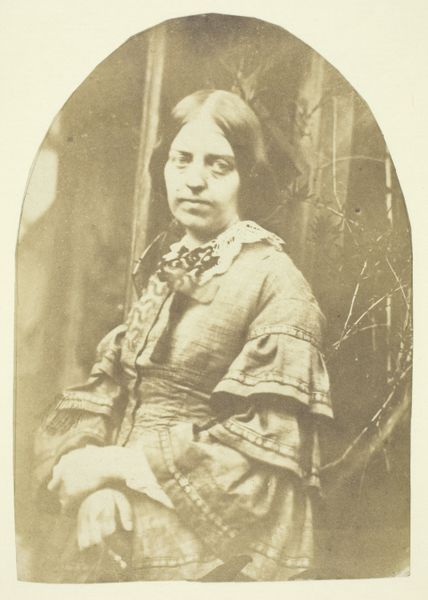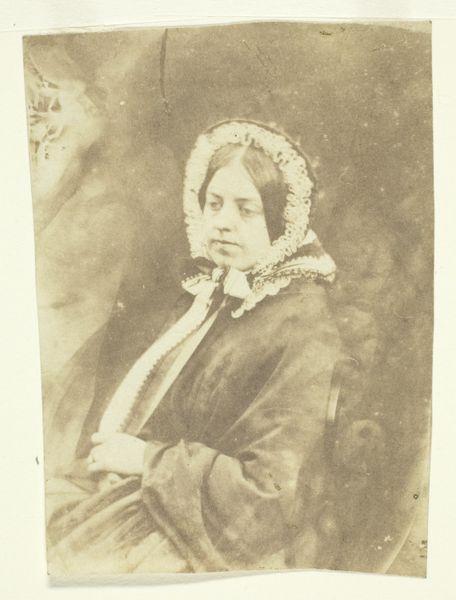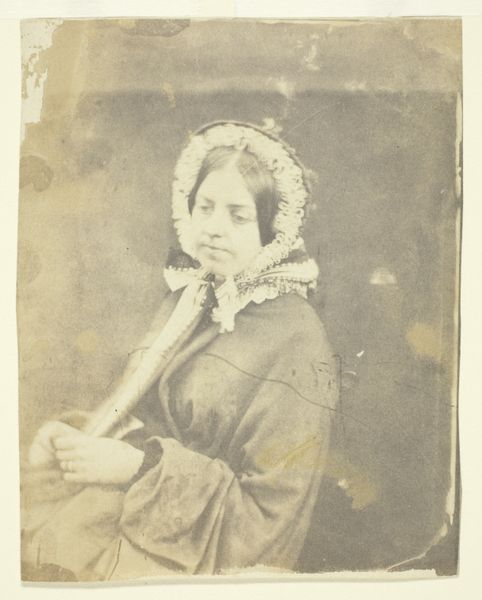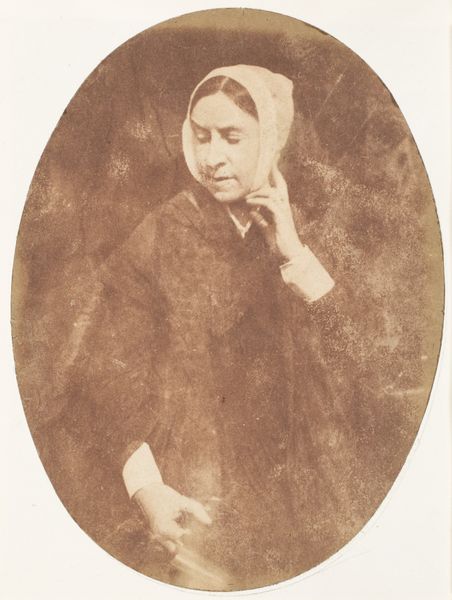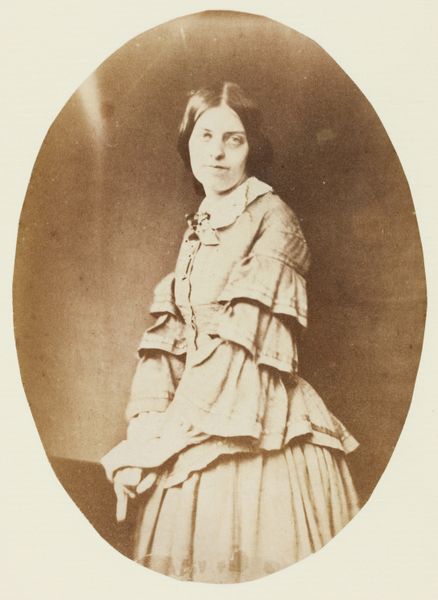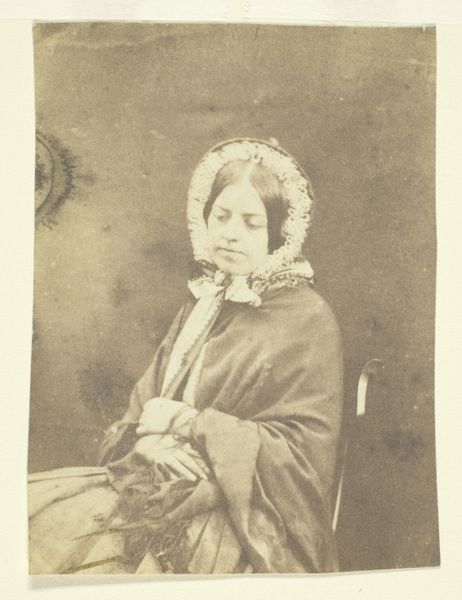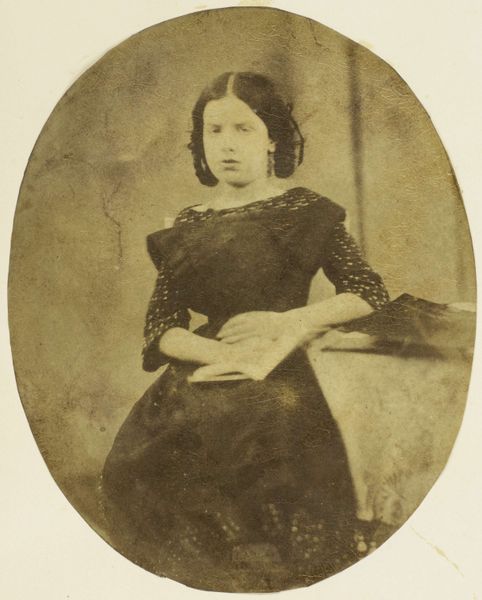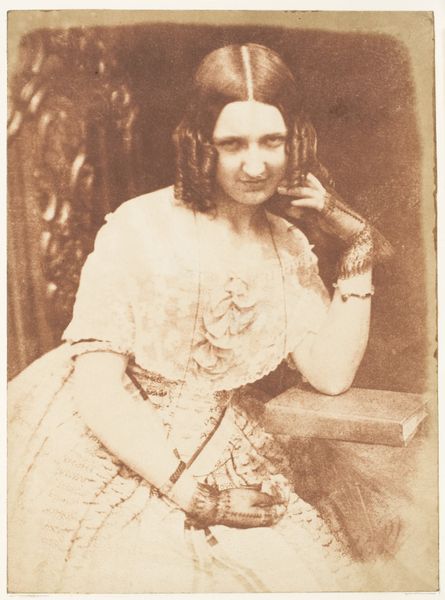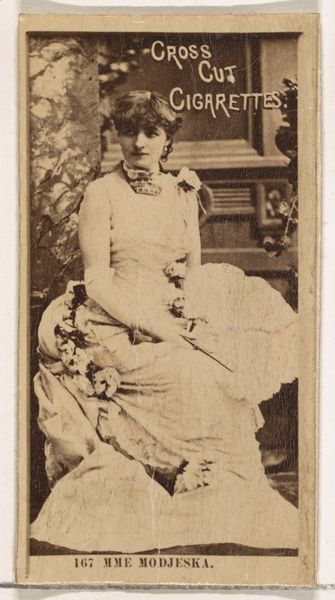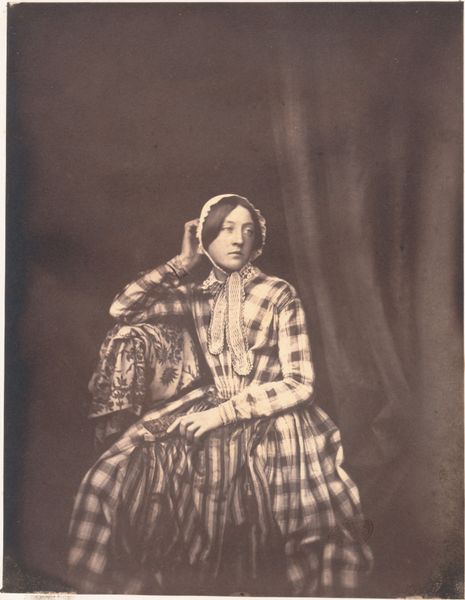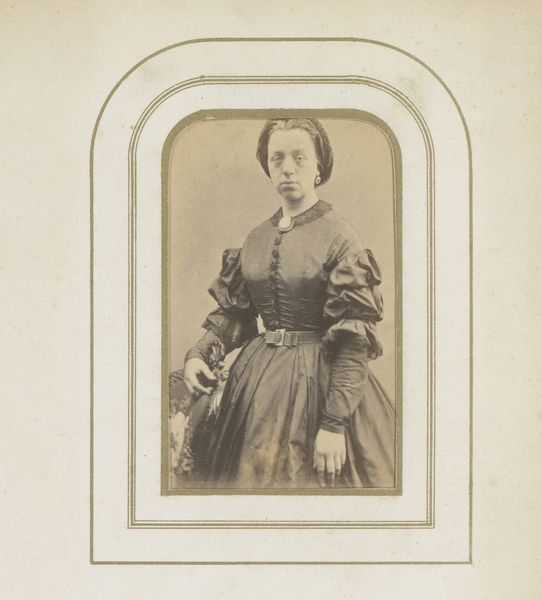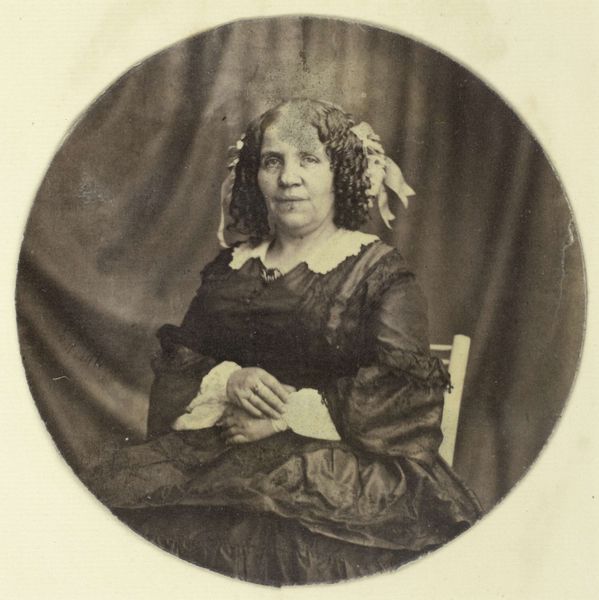
print, paper, photography
#
portrait
#
16_19th-century
# print
#
paper
#
photography
#
england
Dimensions: 11 × 8.5 cm (image/paper, oval); 17.6 × 12.8 cm (mount)
Copyright: Public Domain
Curator: I find myself utterly drawn into the subtle textures of this print, this photograph of "Mrs. Craik," dating back to the 1850s England, now gracing the walls of The Art Institute of Chicago. What do you sense here? Editor: A reserved power. There's a stillness, a gravity in her gaze, almost confrontational considering the time. The oval frame feels like a deliberate choice, focusing on her as an individual. I sense an intelligence challenging societal expectations. Curator: You know, when I look at this image, I am wondering about the light. What kind of narrative does that lighting tell? It feels so precise in a way that captures some inner luminosity, even amidst a certain... formality. Editor: Exactly! Notice the sharp contrast – the light catches her lace collar, the folds of her dress, while her eyes are in soft shadow. It's controlled, almost like she is illuminated by inner strength, defying the era's limiting roles for women. Is she the one staging this tableau? Is she reclaiming control of how women are perceived? Curator: It is curious isn’t it, her calm gaze, almost unsettling amid that fussy collar and the overall seriousness. Perhaps it suggests someone more in command of her identity, or some other kind of subversion beneath all that apparent decorum. It almost tickles, knowing she looks almost out of step to me. Editor: I think it challenges the romanticized and often fragile representation of women at the time. “Mrs. Craik" claims her own space, daring the viewer to meet her on her own terms. And consider the fact this portrait is available, even preserved. Who gets access to the camera? Who controls that distribution? Curator: I do like considering its survival, or what about her essence persists after all that time. This artwork resonates because it invites me to see past the surface and seek some sense of shared experience. What is preserved here? Editor: Absolutely. And to consider the systems of power and visibility that shaped whose stories get told, then and now. A photo is an assertion, as it is the opportunity to reflect, and reclaim those narratives for the future. Curator: You are right! Editor: I rest my case!
Comments
No comments
Be the first to comment and join the conversation on the ultimate creative platform.
